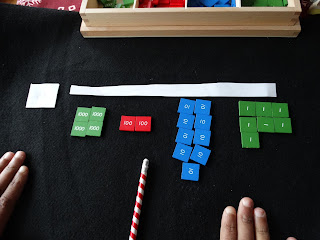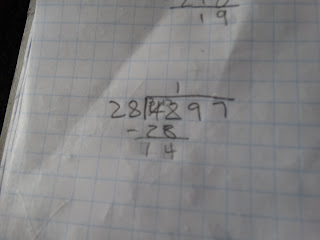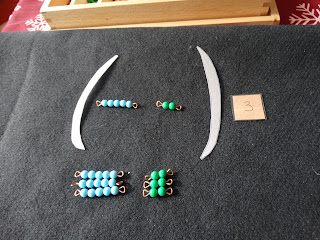Today I reviewed the concept of geometric multiplication with Bubs. It is a simple multiplication problem, but the child draws it on graph paper and color codes it. The problem he started with was 3,748 x 53.

He first started with drawing the multiplicand of 3,748. He started in the bottom right hand corner of the paper and made a dot. Then he counted eight units to the left for the first number of his multiplicand. He made another dot. The length of that line represents eight units so he drew a line to connect the dots and wrote an "8" underneath the line.
Next he drew the multiplier. He started with the same dot as the 8 for the units at the bottom right hand corner of the paper. However, now he will move upwards counting vertically, instead of across the paper horizontally. The unit of the multiplier is 3. He counted up 3 lines and drew a dot. Connect the lines and write a 3 to the right of the line. This length represents the three units of the multiplier. He connected all of the dots to make a rectangle. He is multiplying so he will multiply the units by the units to get some amount. How much is 8 x 3? 24. This equation is written in the rectangle and then colored green for units.

He continues for the remaining categories and colors them according to their category: blue for tens, red for hundreds, and green for thousands. You should be able to click on the picture to enlarge if the picture is too small.

Now, he moved to the next row vertically to multiply the 50 tens. He multiplied 50 x 8. That gave him 400 units. He marked the lines vertically and created another rectangle. Then he colored it green for the units.
He continued with the remaining categories in the second row.

The final step is to calculate his answer. He looked at the products of each area of the diagram and added them together. He recorded his answer as he added each category.















































